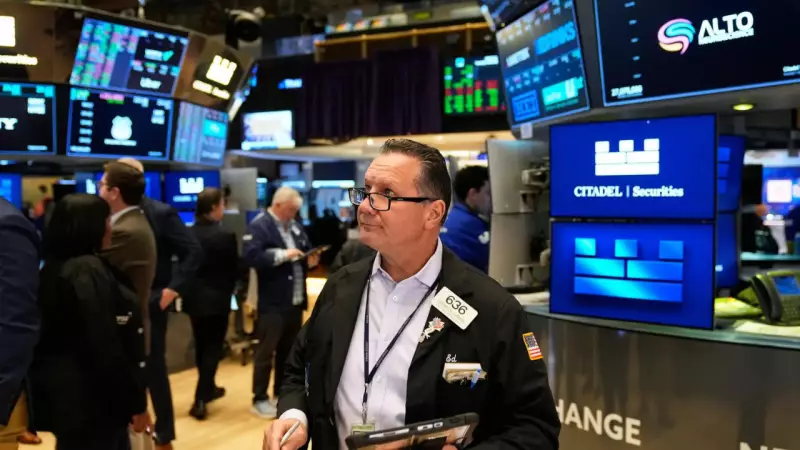
Wall Street began the week on a cautious note as investors prepared for two major events: Nvidia's highly anticipated earnings report and the first release of US government economic data following a six-week hiatus due to the federal shutdown.
Mixed Trading as Key Events Loom
Trading showed mixed patterns during early hours on Monday. Futures linked to the S&P 500 and Dow Jones Industrial Average both experienced minor declines of less than 0.1%, while Nasdaq futures saw a modest increase of similar magnitude.
In a significant market development, Alphabet shares surged more than 4% after Warren Buffett's Berkshire Hathaway revealed in regulatory filings that it had established a substantial position exceeding $4 billion in the Google parent company.
Nvidia's Crucial Test Amid AI Valuation Concerns
All eyes are on Nvidia, which is scheduled to release its quarterly results after market close on Wednesday. The chipmaker recently achieved the remarkable milestone of becoming the first company to briefly cross a $5 trillion market capitalization. However, the stock has shown some weakness in recent weeks amid growing concerns that artificial intelligence-related valuations may have become overheated.
Market analysts emphasize that this earnings report represents a critical test for Nvidia. Companies often address overvaluation worries by demonstrating solid profit growth, which raises the stakes for Nvidia's summer quarter performance. The outcome could significantly influence market sentiment toward the entire AI sector.
Economic Data Drought Finally Ends
The 43-day federal shutdown had suspended crucial economic data releases, leaving both the Federal Reserve and financial markets without updated information on employment, inflation, and GDP since late summer. This data vacuum ends on Thursday when the Labor Department publishes September hiring and unemployment figures.
Several major US retailers including Home Depot, Target, and Walmart will also report their results this week. These earnings will provide valuable insights into consumer strength in the absence of official economic indicators during the shutdown period.
Global Market Performance Varied
European markets experienced declines at midday trading. Germany's DAX fell 0.6%, France's CAC 40 dropped 0.5%, and the UK's FTSE 100 eased 0.2%.
Asian markets displayed mixed performance. Tokyo's Nikkei 225 edged down 0.1% to 50,323.91 after Japan reported an annualized 1.8% economic contraction in the July-September quarter. The dollar strengthened against the yen, moving to 154.86 yen from 154.58 yen.
Chinese markets declined, with Hong Kong's Hang Seng dropping 0.7% and the Shanghai Composite falling 0.5%. Analysts pointed to rising regional tensions after China reacted strongly to Japanese Prime Minister Sanae Takaichi's comments suggesting Tokyo could respond militarily if Beijing moved against Taiwan.
Stephen Innes of SPI Asset Management noted that China's escalation against Japan over the Taiwan remarks has transformed from a diplomatic issue to a significant macroeconomic factor, forcing markets to reassess Asia's near-term risk profile.
South Korea's Kospi surged 1.9% to 4,089.25, driven by strong buying in chip stocks following announcements of AI cooperation with Nvidia. SK Hynix gained 8.2% and Samsung Electronics rose 3.5%.
Other Asian markets showed varied performance: Australia's S&P/ASX 200 remained flat at 8,636.40, Taiwan's Taiex added 0.2%, and India's Sensex advanced 0.5%.
In commodities trading, US benchmark crude rose 14 cents to $60.23 per barrel, while Brent crude added 13 cents to reach $64.52 per barrel.





